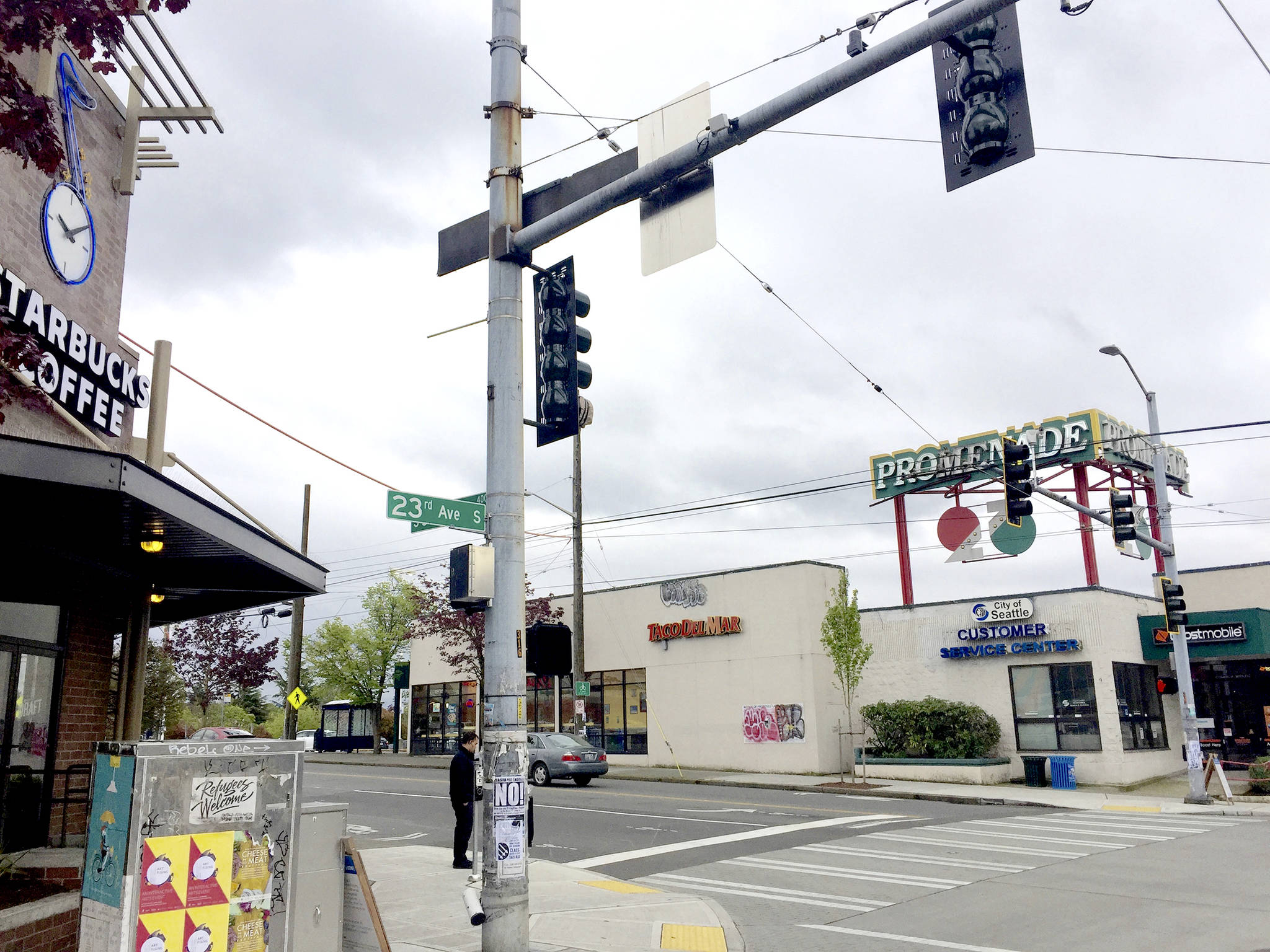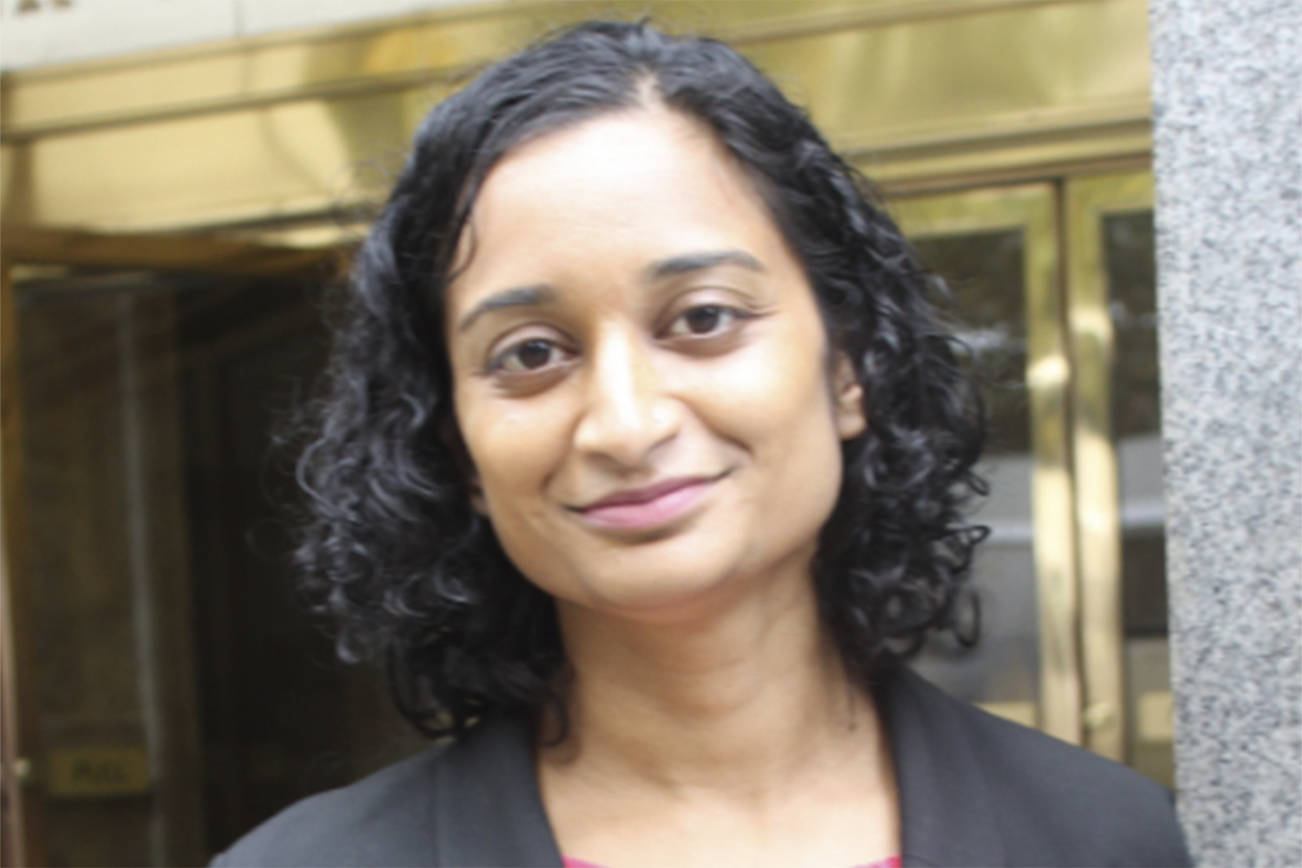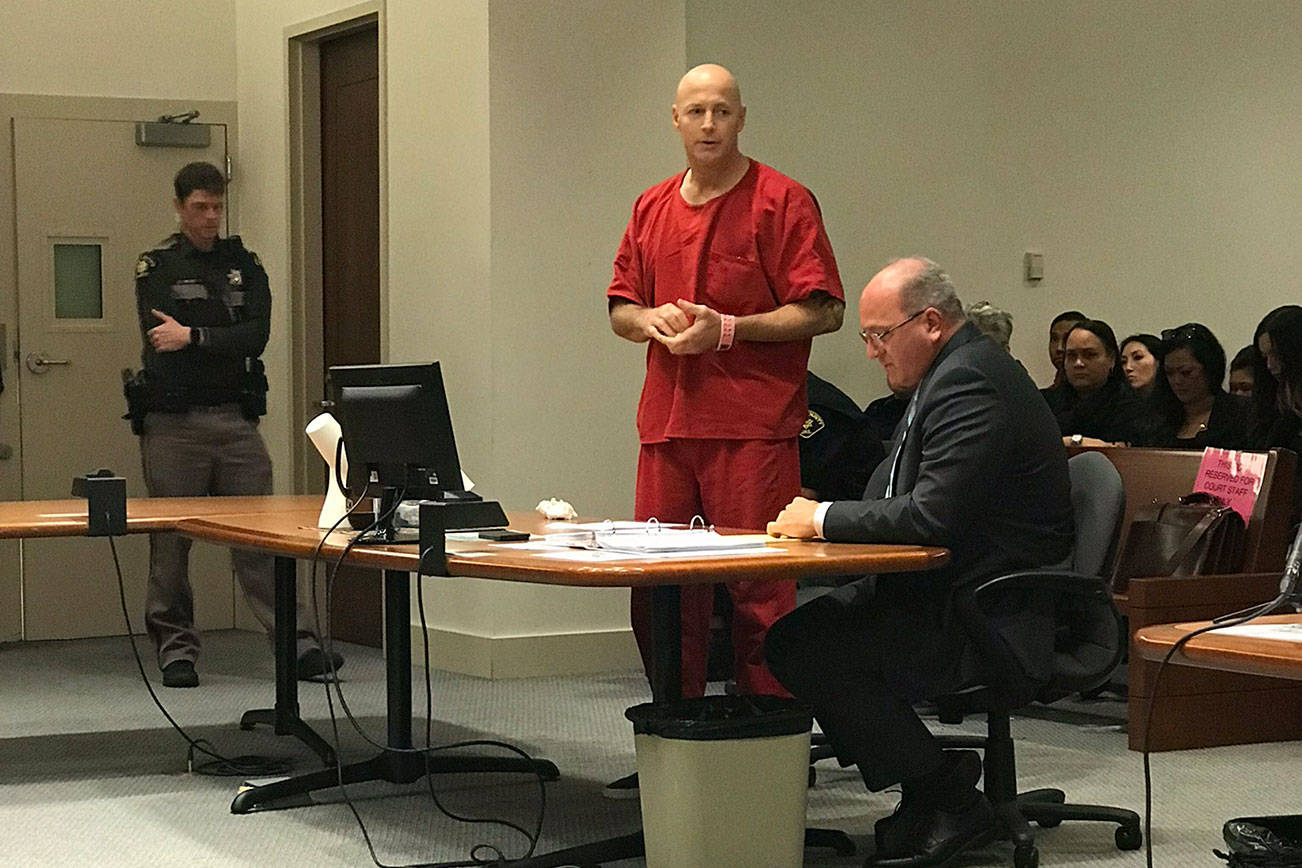The city’s urban planning department has released a plan to rezone key intersections along 23rd Avenue in the Central District—Seattle’s historically black and rapidly gentrifying neighborhood. As it’s done in the U District and downtown, the city would allow taller buildings, but would also require developers to include affordable units in the high-rises—a fight-fire-with-fire gambit that aims to stem gentrification by encouraging more development.
“Generations of families and people have called the Central District home, making enormous contributions to Seattle’s heritage and identity,” Mayor Ed Murray said in a press release recently. “Our goal is to ensure we maintain the cultural character of the Central District while keeping it affordable during a time of unprecedented investment and growth. These affordability requirements will help us accomplish these goals with a shared vision for this unique community.”
But while the proposal has community support, there’s plenty of doubt that the zoning plan will make the Central District—where rents and property values have been increasing along with the rest of the city—accessible to existing or former low-income black residents who once made up the neighborhood’s majority.
“I don’t think it’s enough,” says Evelyn Allen, head of the Black Community Impact Alliance, a coalition of organizations advocating for black community interests in Western Washington and member of a city-convened team of Central District community members who provided input on the up-zone proposal. “’Sufficient’ is not a word that I will use.”
The proposal—which will get its first public hearing in the council’s land use committee next Tuesday—will allow developers to build an additional one to two stories higher at the intersections of Jackson, Cherry, and Union along 23rd Avenue (the specific height limit increase would be from 40’ to 55’).
In exchange, the city would also implement the Mandatory Housing Affordability (MHA) program at those intersections and require that developers restrict rents on 7 to 10 percent of project units to be affordable to people earning 60 percent adjusted median income; a two-bedroom rent-restricted apartment, for example, would be leased at $1,296 per month for a family of three earning $52,000. Alternatively, developers could pay into the city’s affordable housing fund at a rate of between $20 and $29 per square foot.
The upzone and MHA implementation is projected to generate 50 affordable units and $3.3 million in revenue, according to Office of Planning and Community Development spokesperson Jason Kelly.
But the Central District’s history makes debates around land use, housing, upzones, and gentrification in the neighborhood particularly charged and sensitive.
The area has gone from being over 70 percent black in 1970 to less than 20 percent in 2014. The city’s “Seattle 2035” growth plan noted that, in the area surrounding 23rd and Jackson—one of the intersections targeted by the proposed upzone—the share of residents of color has decreased by 15 percent since 1990. The citywide black population has dropped as well.
It’s this context that spurs rhetoric and actions from Murray and the city to treat the Central District with care. In late 2015, the city established the Central District as its second “Cultural Arts District,” and, in late 2016, Murray proposed changes to the MHA program that raised the affordability requirements there (similar provisions were made for the International District). As such, the coming upzones for the Central District, as proposed by the mayor’s office, will have higher affordability requirements.
The 23rd Avenue upzone plan, in contrast to the relatively recent HALA proposal, has been a long time coming. Since 2014—before Murray convened his housing task force in 2015 to address rising rents in the city—the city’s urban planning department has been conducting outreach to Central District community members and stakeholders to develop the 23rd Avenue Action Plan, a comprehensive urban planning blueprint to guide land-use policy and transit infrastructure development along key intersections of 23rd Avenue aimed to preserve the cultural legacy of the Central District as a black neighborhood. This upzone proposal is a culmination of this process.
The 23rd Avenue Action Community Team (ACT), a group of Central District community members, property and business owners, and advocates, has been collaborating with the city during this time on developing the plan. They’ve endorsed the upzone proposal, arguing that it is both the product of extensive community feedback and will keep the Central District accessible to black and low-income residents.
“If you look at our proposal, it puts density around those major nodes,” Lois Martin, chair of the Community Day Center for Children in the Central District. “Based on having all the different community meetings and outreach to find out what folks are interested in, that’s what we gathered from the neighborhood,” she said, noting that the feedback they received indicated that the community wanted density at the intersections as opposed to around the neighborhood.
“The whole thing is to make the Central Area accessible not only to those families that have been displaced,” Martin added. “We are hopeful that having the density around those nodes with affordable units, will make it a place that is affordable for past, current, and future resident.”
However, Martin acknowledged the limitations of the MHA program in the Central District when it comes to low-income black residents. “The AMI [levels] are not low enough to make it easier for those people to return.”
Sheley Secrest, a vice president with the Seattle King County NAACP and candidate for city council position 8 (the seat that sitting councilmember Tim Burgess will vacate next year), was blunter in her assessment of MHA’s potential effectiveness in the Central District. “I believe they [the city] are simply looking at affordable housing and not looking at who is being left out of that,” she said. “That will not stop displacement and do nothing for gentrification.”
The disparity between the city’s metric for affordability—housing units set-aside by developers participating in the MHA program are required to restrict rents that are affordable to individuals and families make 60 percent of the area median income; which amounts to an individual making $40,000 annually and a family of three making $52,000—and local black incomes is stark. In 2013, the median black household income was $25,700.
This isn’t to say that advocates for the Central District don’t want development and growth. After decades of economic isolation, developers have finally started to take interest in the area as Seattle grows and white renters and homebuyers move into the neighborhood.
“You’re talking about a historically disinvested area of Seattle. We’ve for years been asking for developers to invest,” said Secrest. “Forever it’s fallen on deaf ears. None would come to the central area. Finally, when you have white residents, residents with resources, all of a sudden, we’re being heard.”
Secrest noted that for the remaining property and home owners in the neighborhood, growth and increased developer interest has raised property values to their benefit. “Investment needs to come in. Those who own homes, their values are appreciating.”
Others see a dark irony in the new developer interest in the Central District.
“We were forced here and created our history and traditions, and now we’re fighting to stay here. It’s crazy what we have to do to preserve our history and culture,” said Adrienne Bailey, a 62-year-old lifetime resident of the Central District and member of the ACT committee. “You’ve got lawyers down at the court house looking for who’s died and then calling to see if you would like to sell your property. When my mother passed, I had all kinds of people calling me to see if I could sell my property.
“It’s predatory, but it has a new twist.”
As for the upzone and MHA’s implementation, Bailey said she supports the goal of trying to bring back families and individuals to the area. “Trying to figure out [how] our kids and everyone can come back to the Central Area, I’m all for.” But she added that “it’s almost too late.”
In contrast, some urban planners argue that implementing higher affordable housing requirements in the Central District ultimately harm the black community that it is touted as protecting because higher requirements on developers could disincentive housing construction. In a letter sent to Murray and the Seattle City Council on May 15th, the Seattle Planning Commission—an independent board that advises the city and the council on urban planning—articulated this exact argument, claiming that increasing affordability requirements in “areas with a high risk of displacement” may ultimately harm marginalized communities by discouraging development, exacerbating Seattle’s housing shortage and, ultimately, raising rents further due to increased tenant competition for a limited number of units.
The letter recommends looking at affordable housing solutions that aren’t developer fees: “More permanently affordable housing and investments in community infrastructure are needed to stabilize Seattle’s most vulnerable populations and make sure that existing communities are benefiting from growth in their neighborhoods,” it reads. The letter suggests that the city instead use existing block-grant programs to fund equitable developments in the Central District.
Others point to the broader growth strategy that the city has adopted and Seattle’s zoning as a primary driver of gentrification in historically marginalized neighborhoods like the Central District. Dan Bertolet, a senior researcher with Sightline (a local pro-development urbanist thinktank), argues that the city’s strategy limiting upzones, growth, and density to a handful of small areas of the city dubbed “urban villages”—such as the Central District and the University District—and keeping the majority of the city zoned for single-family home development forces high-income earning renters and prospective homebuyers to compete for limited housing with their counterparts on the low end of the socioeconomic scale in displacement-prone communities. And, in Seattle, the market doesn’t fail to reward the highest bidder.
“What’s missing from this conversation is a hard look at Seattle’s citywide zoning that exacerbates displacement by reserving more than half of the city for single-family houses,” Bertolet wrote in an email. “That’s [single-family zoning] not just making those neighborhoods into essentially gated communities, it’s also sending those in search of homes to lower-cost neighborhoods such as the Central District or further south in the Rainier Valley, driving up prices and making it harder to for long-term residents in those communities to stay.”
The proposed upzone and accompanying mandatory affordable housing are not the only strategy being implemented by the city and advocates to preserve the Central District’s legacy. Among other program, the Seattle Office of Housing has invested substantially with revenue from the Housing Levy in non-profit affordable housing projects throughout the neighborhood. A spokesperson from the Office of Housing said that they have funded 968 affordable units in non-profit housing projects in the Central District since the late 1980’s (these units are rent restricted at a variety of levels, but most range between 30 and 60 percent area median income).
Neighborhood advocates and organizations have also been looking at creative ways to build affordable housing and institutions that preserve the area’s cultural legacy. The news broke recently that Africatown, a community development group, and Forterra. a land trust, had sealed a deal with developers to divide up the Midtown Center property at 23rd and Union; Africatown and Forterra will build 120 to 135 affordable units with rents restricted to 40 percent AMI (in addition to retail space) while the developer will build a 400 unit mixed-use apartment complex, with 125 affordable units at 60 to 85 AMI. Meanwhile, at 23rd and Jackson, the Vulcan-financed 520-unit mixed use project plans set aside 100 units at 65 to 85 percent AMI.
Increased development height limits can also benefit non-profit affordable housing projects that receive a substantial funding sum from the Office of Housing and the Housing Levy. Allen with the BCIA noted that there are several Central District-located non-profit affordable housing projects in the pipeline that will be benefit from the up zones, such as the Liberty Bank building project and the Fire Station 6 project. “With the up zone we’d be able to put more units in.”
Despite her perceived limitations of the MHA program, Allen praised the city for its efforts to collaborate and address gentrification in the neighborhood. “There has been a great investment and great recognition by the mayor, the Office of Economic Development, and the Office of Housing in looking at ways that we can participate in this great income explosion here in Seattle,” said Allen. She added that she sees the various efforts as a multipronged strategy to save the Central District. “All these things are overlaying and overlapping each other.”
“The black community has suffered greatly from gentrification so we’re trying to stem that tide,” Allen said. “Change is going to happen. We’re [just] trying to ensure that everyone who is here can prosper in place.”
news@seattleweekly.com








